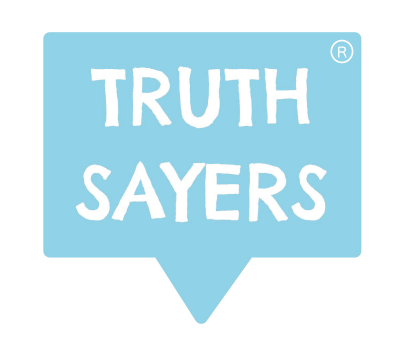You could be at Risk of Workplace Stress Lawsuits without using the right tools
Stress in the workplace can have a significant impact on both the mental and physical health of employees. It can lead to an increased risk of depression, anxiety, and other psychological issues, as well as physical ailments such as heart disease, diabetes, or obesity. As such, it is essential that organisations take steps to measure and reduce stress levels amongst their staff. Unfortunately, traditional explicit methods of measuring stress are flawed and can be unreliable indicators of stress levels in the workplace. In order to accurately measure stress in the workplace, organisations should look towards implicit methods such as Implicit Reaction Time (IRT) testing.
Explicit Measurement Methods: Limitations & Dangers
Explicit measurement methods are those which directly ask people about their feelings or experiences regarding a particular situation or event. These methods may include questionnaires or surveys which ask individuals about their feelings of stress in the workplace. While these explicit measurement methods may provide useful information concerning an individual’s self-reported level of stress at work, they are limited by a number of factors.
Firstly, explicit measurements rely on individuals’ self-reporting which is often subject to bias due to social desirability effects – that is, people may not accurately report their true feelings due to fear of judgement or need for social approval from others or due to ‘trait desirability’ - wanting to present themselves in a positive light (Phillips & Clancy 1972 [1]). Furthermore, respondents may inaccurately interpret questions posed by survey designers leading to misreporting (Krosnick & Alwin 1987 [2]). This could lead organisations into believing that employees are less stressed than they actually are - potentially leading them into taking insufficient action when it comes to reducing employee workloads or addressing other sources of work-related stress (e.g. bullying). Although stigma around mental health is being widely tackled, employees are still likely to be biased against openly sharing the truth about their mental health, particularly when the cost of living crisis stacks onto that stress. Often the individual may not be consciously aware of the level of stress they are experiencing, because our self-protective instinct is to deny feelings that upset the status quo in our mind. It is very rare that cognitive dissonance like this can be picked up by explicit methods alone. Such misreporting could result in serious consequences for both employees and employers alike; research into mental health by Deloitte in 2022 revealed that 28% of employees left their job in 2021 or intend on leaving in 2022 and that 61% of these people are blaming poor mental health for the reason. The Lancet[3] estimates, so far, a staggering 53 million new cases of major depression have developed globally as a result of the pandemic. Not only do these absences result in financial losses for employers but they can also result in legal implications if employers fail to adequately address stressful working environments - lawsuits against Uber Technologies Inc., Apple Inc., Microsoft Corp., and Google illustrate this point clearly (Meyer 2019).
Implicit Measurement Methods: Advantages
In contrast with explicit measurements which focus on self-reported responses from individuals regarding their experiences, implicit measurements use indirect measures such as reaction time tests which require individuals to respond quickly without thinking too much about it (Reips 2002). One example of the implicit measurement method is Implicit Reaction Time testing which uses reaction times between two stimuli presented sequentially on a computer screen as an indicator for nonconscious attitudes towards certain topics or issues. This type of test has been used extensively over the past few decades for measuring attitudes towards various topics including racism (Greenwald et al 1999), sexism (Kucharski et al 2016), smoking behaviour (Munafò et al 2005), etc.. More recently IRT testing has been utilised for studying workplace issues such as job satisfaction levels amongst nurses (Stevenson & Kudláček 2016) and levels of happiness amongst software developers (Vuori 2017). In comparison with explicit measurements IRT offers several advantages; firstly its indirect nature reduces response biases associated with self–report measures allowing researchers to capture true underlying attitudes more accurately than traditional questionnaires or surveys would allow them too (Hofmann & Gawronski 2020; Reips 2002). Secondly IRT tests provide results quickly, allowing organisations access to large numbers of employee attitudes simultaneously rather than relying on data collected from individual interviews, reducing costs associated with data collection processes (Reips 2002). Finally IRT tests allow researchers to compare results across different populations easily – something that would otherwise be difficult using standard survey techniques (Reips 2002).
How to avoid a lawsuit
It is clear that although traditional explicit measurement techniques may provide useful insights into employees’ reported experiences with work related issues, they have severe limitations when used alone. Using explicit together with implicit methods is the only way to get a complete picture of what is going on below the surface for your employees. Not only do IRT tests reduce response bias associated with self–report measures, but they also allow researchers to quickly assess large groups, across different populations, simultaneously without compromising accuracy. Organisations that want to better protect themselves from legal implications arising out of work-related stress conditions, should seriously consider using combined IRT testing with explicit models when assessing employee attitudes towards stressful working conditions. Using both methods will enable you to:
Listen deeply to what your workforce is trying to tell you and understand their needs.
Gather employee experience data that is easy to interpret, understand and act upon. By using explicit and implicit methods to gather data you will quickly be able to see the areas where the stressors are within your organisation. Where the explicit and implicit data is aligned people are being authentic and open, but where the data diverges from implicit to explicit, cognitive dissonance exists and the greater that gap, the greater the mental stress your employees are likely to be under, as they are masking their dissatisafaction. The right data analysis helps you understand the problems you need to address - before employees take legal action.
Prioritise workplace well-being and start difficult conversations. Identifying potential problems early means that you can put in place measures to alleviate stressors. Deep data findings also allow you to initiate what may be difficult conversations meaning that you can nurture an open culture and tackle issues head on. When employees feel they are working in an organisation that supports wellness, they are more committed, engaged and productive.


